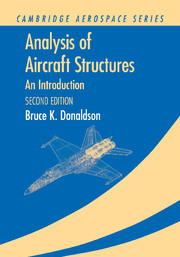Book contents
- Frontmatter
- Contents
- Introduction to the Second Edition
- Introduction to the First Edition
- List of Repeated Engineering Symbols
- Acknowledgments
- Part I The Fundamentals of Structural Analysis
- Part II **Introduction to the Theory of Elasticity**
- Part III Engineering Theory for Straight, Long Beams
- Part IV Work and Energy Principles
- Part V Energy-Based Numerical Solutions
- 16 **Precursor Numerical Analyses**
- 17 Introduction to the Finite Element Method
- 18 Finite Element Truss Problems
- 19 Basic Aspects of Multidimensional Finite Elements
- 20 The Unit Load Method for Determinate Structures
- 21 The Unit Load Method for Indeterminate Structures
- Parts IV and V Review Questions
- Part VI Thin Plate Theory and Structural Stability
- Appendix A Additional Topics
- Appendix B Selected Answers to Exercises
- References
- Index
Parts IV and V Review Questions
from Part V - Energy-Based Numerical Solutions
Published online by Cambridge University Press: 05 June 2012
- Frontmatter
- Contents
- Introduction to the Second Edition
- Introduction to the First Edition
- List of Repeated Engineering Symbols
- Acknowledgments
- Part I The Fundamentals of Structural Analysis
- Part II **Introduction to the Theory of Elasticity**
- Part III Engineering Theory for Straight, Long Beams
- Part IV Work and Energy Principles
- Part V Energy-Based Numerical Solutions
- 16 **Precursor Numerical Analyses**
- 17 Introduction to the Finite Element Method
- 18 Finite Element Truss Problems
- 19 Basic Aspects of Multidimensional Finite Elements
- 20 The Unit Load Method for Determinate Structures
- 21 The Unit Load Method for Indeterminate Structures
- Parts IV and V Review Questions
- Part VI Thin Plate Theory and Structural Stability
- Appendix A Additional Topics
- Appendix B Selected Answers to Exercises
- References
- Index
Summary
True or False?
The Principles of Virtual Work and Complementary Virtual Work are valid only for elastic materials.
The virtual work and complementary virtual work of a entire structural system are simply the sum of the virtual work and complementary virtual work, respectively, of each part of the structural system.
Typical virtual work and complementary virtual work statements are δW = u δF, and δW* = F δu, respectively.
The PCVW for small strains is entirely equivalent to the linear strain–displacement equations, and therefore is entirely equivalent to the linear compatibility equations.
One possible form of complementary virtual work is a real moment moving through a virtual rotation.
The PCVW requires that the virtual forces and moments form a system of forces and moments that are in equilibrium with the actual forces and moments.
There are only stylistic differences between the virtual load method, the unit load method, and applications of Castigliano's second theorem.
The unit load method is a special application of the PCVW wherein a unit load system consisting of a unit load and its equilibrating reactions are the set of virtual loads.
For both statically determinate and indeterminate structural systems, any unit load system must be distributed as if the unit load system were another actual load system where, generally, any actual load system satisfies more than just equilibrium conditions. Note that all “load systems” include support reactions.
There need be no connection between any unit load system and the applied load system, and each unit load system must be linearly independent of all other unit load systems used in that analysis of the indeterminate structure.
[…]
- Type
- Chapter
- Information
- Analysis of Aircraft StructuresAn Introduction, pp. 747 - 756Publisher: Cambridge University PressPrint publication year: 2008



